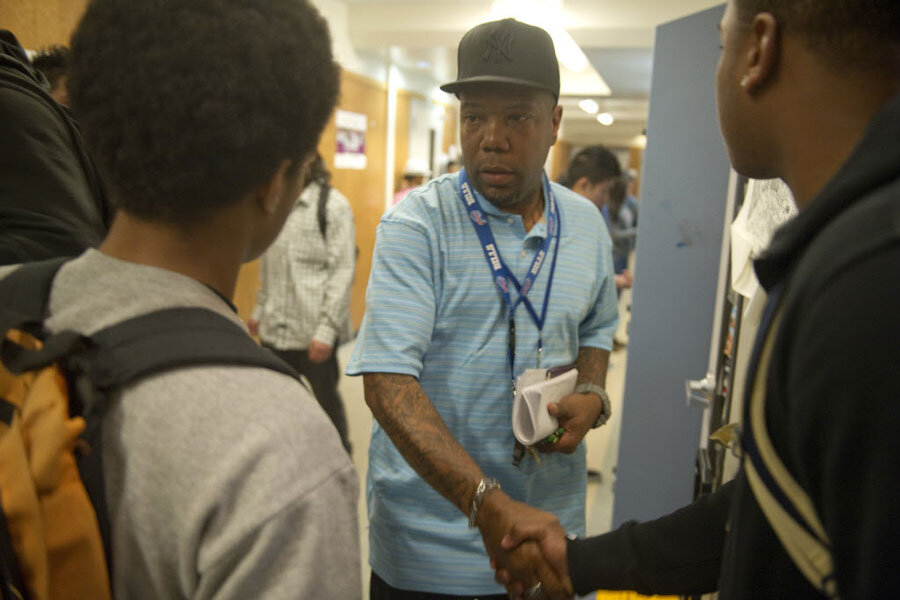Race in school discipline: Study looks at silence among educators
As protests and anger continue to percolate around the deaths of Eric Garner, Michael Brown, and other unarmed black men, one group is calling attention to the fact that many of the racial stereotypes that may have contributed to these events begin at much younger ages.
Civil rights groups in recent years have been highlighting the often extreme racial disparities in school discipline: Minority students, particularly boys, tend to face far harsher punishments, even at young ages, for the same infractions that non-minority students commit. And punishments like suspension, in particular – which keep children out of school – can have big repercussions down the road as they influence graduation rates and school achievement. It’s a problem some have termed the “school-to-prison pipeline,” and that President Obama highlighted earlier this year when he unveiled the "My Brother's Keeper" program to reform school-discipline policies.
On Wednesday, the Discipline Disparities Research-to-Practice Collaborative, which earlier this year published an analysis of research on discipline disparities, released a new paper focused on the reluctance of educators to talk about or acknowledge the ways they might view students differently by race, and calling on schools to be more direct in the ways they confront racial issues, and to do something with the data they collect.
"There’s this adultification that’s linked to criminalization. [Educators] don’t give black and brown boys that same kind of benefit of doubt, where they're allowed to be naughty or mischievous," says Prudence Carter, a sociologist at Stanford University's Graduate School of Education and one of the authors of the latest report.
In the recent shooting of Tamir Rice, a 12-year-old black boy playing with a BB gun, the officer assumed Tamir was about 20 years old, notes Professor Carter. "Where does this implicit bias come from?"
Data from the federal government has shown both that suspension as a punishment has increased significantly over the past few decades, and that such punishments are disproportionately given to minority students. The latest federal data, released in March, showed that black students are expelled and suspended at a rate 3-1/2 times greater than white students. And the disparities start young: Black students account for 18 percent of preschoolers in the research sample, but 48 percent of preschoolers with multiple suspensions.
That sort of data is getting more attention lately, but Carter and others say it's time for school districts to do something about it – and that simply getting individual teachers to acknowledge the issue is a starting point.
"You have to accept there is a problem," says Carter. "People tend to ignore the conversation or don’t want to have it, or are too sensitive or don’t want to be perceived as having any racial patterns" in their thinking. Professional development programs with teachers that help them to see and understand cultural differences they might have – especially toward students of different races – can be a good starting point, she says, as well as replacing zero-tolerance discipline polices with restorative-justice policies, which focus on preventing and resolving conflicts.
Implicit bias, "microaggressions" (brief encounters that reinforce stereotypes), and an unwillingness to talk about race or promote colorblindness are all factors that contribute to the problem, the paper argues.
"Imagine a school district with consistently low reading achievement scores, yet within that district an unwritten code prevented staff from explicitly discussing the topic of reading," the authors of the paper wrote. "Obviously, the failure to address the central problem would guarantee that reading deficits would persist over time. In the same way, in part because we don’t discuss and then address the racial dynamics of our racially disproportionate discipline, racial disparities in discipline continue to worsen over time.”
Instead, argue Carter and the other researchers, districts need to collect detailed data about race and discipline, and then engage in in-depth discussions with administrators, educators, and community members about why racial disparities in discipline might occur, and how to change the approach.
Such conversations might be awkward, the authors say, but are necessary.






